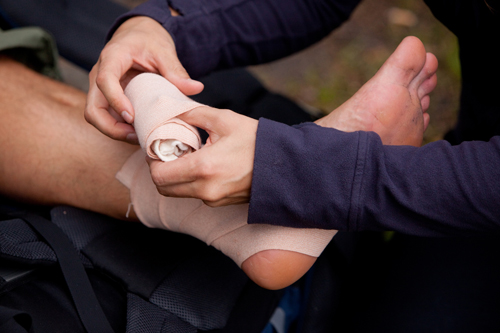
Although the fibrous Achilles tendon is the strongest band of connective tissue in the body, it is prone to damage, which can necessitate surgery. In one scenario, most of the tendon has degenerated, and the paratenon (the tissue covering the tendon) has become inflamed (paratendonitis), causing pain. Or a person—often a middle-aged weekend athlete playing a sport requiring quick movements like basketball or tennis— experiences as udden, very painful tear in the tendon. When there is a complete tear, the physician will determine whether surgery or nonoperative management is optimal.
Achilles tendon conditions that require surgery are potentially very painful before and after surgery. In fact, getting a patient to the point of being pain free is one reason that rehabilitation may last so long—sometimes, up to one year.
Because the surgical incision is made in an area of the body that is literally thin-skinned and has a less-than-ideal blood supply, the larger the incision, the greater the chance of poor healing and infection, which can impede the progress of rehabilitation. Thus, patients may wear a brace for up to two months to protect not only the repaired tendon but the incision as well.
Limited rehabilitation therapy—range-of-motion and conditioning exercises, for instance—can be performed while you wear a brace. A removable brace/splint can minimize the likelihood of blood clots, muscle atrophy and joint stiffness associated with a cast, and with it, more rehabilitative physical therapy can begin earlier, perhaps within a few days after surgery. A little later, strengthening exercises may be performed in a pool, allowing the tendon to start to regain its function in the safety of water’s buoyancy. Exercises carried out on land will involve both legs to “share the load.”
Of course, recovery and rehabilitation rates differ for each patient. Generally, a person with a surgically repaired Achilles tendon should be able to walk and swim six weeks postsurgery, while running and other sports drills may be possible within four to six months. Although some pain may linger for a while , at the six-month mark many athletes are ready to initiate a gradual return to sport activities.
We can work with your physician to design an exercise program individualized to your rate of recovery. This way, you can regain strength and range of motion that will permit you to resume your sports activities pain free.
